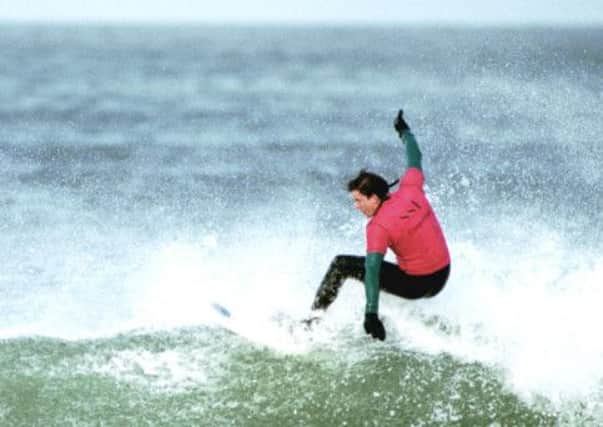Roger Cox: sewage and Scottish surfing


Popular with surfers all year round thanks to the shapely waves that peel along its cobblestone rivermouth and thump onto its sandbars, Pease is situated just 1,500m from a Scottish Water sewage treatment plant at Cove. During the officially designated bathing season, which lasts from June to September, Scottish Water bombard the sewage at Cove with UV rays to kill the various nasties in it before releasing it into the North Sea; for the rest of the year, however, the UV treatment is switched off.
The environmental charity Surfers Against Sewage has long argued that, as hundreds of people use the water at Pease all through the winter (ain’t wetsuits great?), UV treatment should be carried out all year round to protect them from waterborne infection. When I spoke to Scottish Water about this, however, they said they were acting within the law by only using UV treatment in the summer months, and when I questioned a representative from the Scottish Environment Protection Agency (SEPA), the body responsible for regulating bathing water quality, he said tests had been carried out that showed the water at Pease was OK even in winter, so there was no need for Scottish Water to act.
Advertisement
Hide AdAdvertisement
Hide AdBut there are tests and there are tests. A water quality test carried out on a Cornish beach in 2010 by Southwest Water and Cornwall Council took samples from 20 different spots on the beach on 23 different days, and generated more than 500 units of data; the SEPA test took samples from one spot on three different days and generated just six units of data.
Andy Cummins, campaigns director at SAS, told me that this wasn’t anywhere near good enough: “When we’ve got that information [the results of a comprehensive test], then we can all sit around a table and say ‘let’s have a common sense approach here – these are the true impacts’. But we simply can’t do that with the information we’ve got so far”.
To be honest, when I wrapped up last autumn’s three-part water quality epic with the words, “Given the potential risks to public health, a detailed study of the winter water quality at Pease doesn’t seem like an unreasonable request,” it was more in hope than expectation, but the other day I got a call from Cummins to say that SAS were finally going to get what they wanted: SEPA were going to carry out detailed water quality tests at Pease.
It turns out that more than a little serendipity was involved. SAS’s South East Scotland rep, Alasdair Steele, bumped into the Minister for Environment and Climate Change, Paul Wheelhouse, at the tail end of last year, and took the opportunity to mention the Pease campaign. Wheelhouse then invited Steele and Cummins to book a meeting with him, which eventually took place on 16 May.
“We told him that the testing that had been done was not enough to base a decision on,” says Cummins. “I led on the impacts on human health and the environment, but what Alasdair was able to do to really shore that up was say, ‘look, in the middle of winter on a good surfing day you can have several hundred people in the water through the course of the day’. And he was able to back that up with a petition with over 500 signatures.
“Paul actually lives nearby so he did concede that, yeah, he’d seen the cars parked up all along the lane.”
UV treatment at Cove will cease as usual on 15 September this year, but from then on, right through the winter, SEPA will carry out detailed water quality tests. “We’ll help SEPA design the tests,” says Cummins. “We won’t oversee them because they’re the regulator – we’ve got to trust them to enforce the legislation. I think it would be disrespectful if we went down and stood over their shoulder, but what we are looking to do is help set up the parameters under which the testing will be done. And then, based on a proper testing regime with some reliable results, it should be possible to make an informed decision – and if there’s a potential impact for recreational water users I think, as it stands, without making a concrete commitment, Paul’s position was ‘then we’ll review the UV turn-offs’.”
So there you have it – the Pease Poo Saga continues.